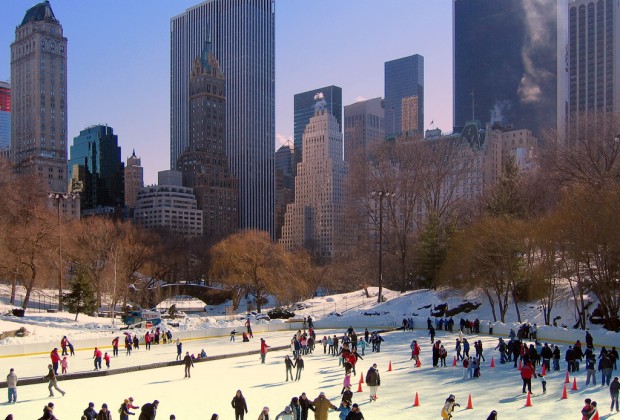Throughout its more than 150 year history, Central Park has had many ups and downs, but it has always been one of the defining features of New York City, and a park like no other. Central Park’s 843 acres are truly a masterful creation. The park has 36 bridges, each completely unique, many paths for walking and horseback riding, and six miles of drives for joggers, cars, bicycles, skaters, and the like. The park also features several enclosed playgrounds for children, half a dozen lakes and ponds, the Central Park Zoo, two ice skating rinks, Belvedere Castle, one of America’s largest Carousels, a public theater, open-air concerts, and dozens of other attractions.
In 1857, construction on the Park began, following the plans of Frederick Law Olmsted and Calvert Vaux. The initial work on the Park was mostly completed by 1873, after 16 years. Despite the Park’s very natural look, the lakes were completely man made, and roughly 22,000 tons of topsoil brought in from New Jersey, for more than four million plants, shrubs, and trees, which were initially transplanted into the Park. Among hundreds of flora and fauna present today, the park has an impressive 1,700 Elm trees which have remained untouched by Dutch Elm Disease. Hundreds of birds, squirrels, chipmunks, and other species also call the Park their home.
Fun facts about Central Park:
- Central Park has 35 million visitors annually
- The real estate value of Central Park is more than $528 billion
- More gunpowder was used to clear the area for Central Park than was used at the battle of Gettysburg during the American Civil War
- Automobiles are prohibited on the drives after 7:00 pm at night, and on weekends
- The park has 23 sculptures, from Alice In Wonderland, to the “Angel Of The Waters”, to Balto, the sled dog
- Central Park is one of the most popular places for marriage proposals and weddings
To find maps of Central Park, and a full list of attractions, activities, and events, go to CentralPark.com.









































No Comments